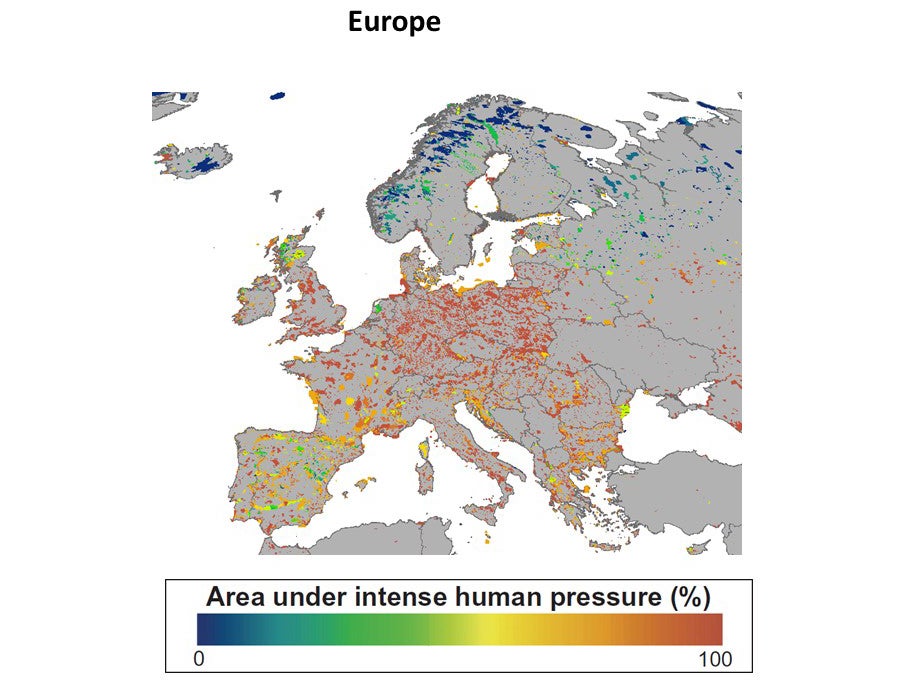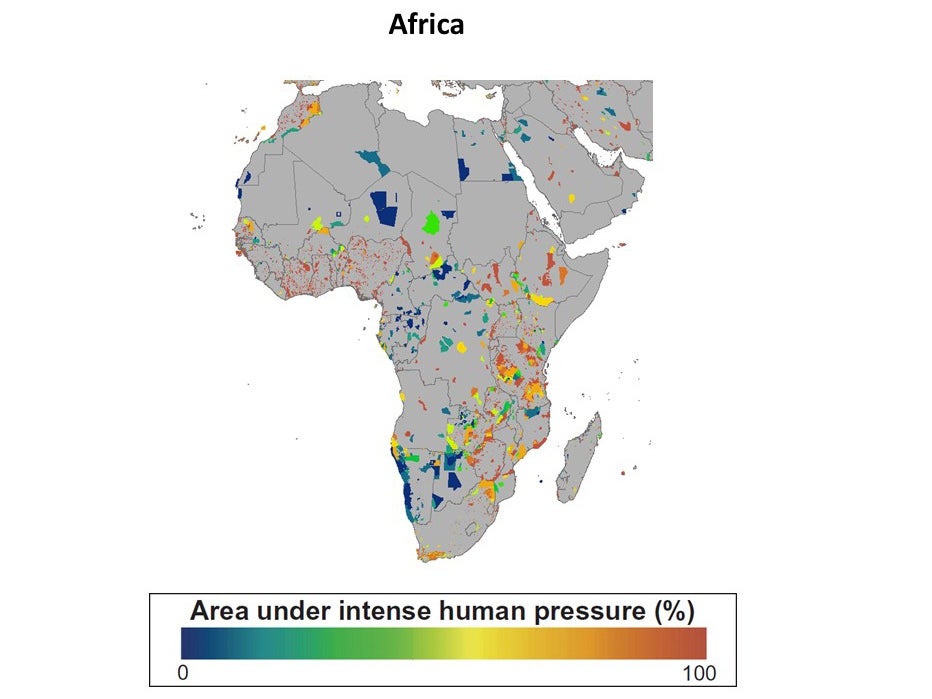One third of world’s ‘protected’ national parks and wildlife sanctuaries threatened by human activities
‘Governments are claiming these places are protected for the sake of nature when in reality they aren't’

Vast areas set aside to protect the world’s animals and plants are being destroyed as human activities like road building and urbanisation encroach on them.
A third of the land in the world’s wildlife sanctuaries and national parks – a total area of 2.3 million square miles – faces destruction due to human activities.
Hardly any of the global protected land remains untouched, with over 90 per cent of it bearing some evidence of damaging human activities.
The news serves as a “stunning reality check” for those who consider such spaces to be safe havens for the world’s wildlife, according to the authors of the new report documenting these findings.
"Governments are claiming these places are protected for the sake of nature when in reality they aren't," said Professor James Watson, a Wildlife Conservation Society research director and one of the authors of the study.

"It is a major reason why biodiversity is still in catastrophic decline, despite more and more land being protected over the past few decades."
Past studies have described a “biological annihilation” that will see many of the world’s species vanish with decades.
Some of the UK’s best known wildlife is facing “alarming” declines, and agricultural practices have been linked with a drop of over 50 per cent in populations of the country’s farmland birds.
The new study, published in the journal Science, places some of the blame for these declines on a global failure to adequately police zones set aside specifically for conservation.
The research found that major infrastructure projects including highways, industrial agriculture and even entire cities are located within these spaces.
Since 1992, the total protected land area has roughly doubled in size, covering over 15 per cent of the world’s land. The current plan is to expand this to 17 per cent coverage within the next two years.
However, the new report by Professor Watson and his colleagues shows that humans are spilling over into these zones – particularly in densely populated regions in Asia, Europe and Africa – rendering many of them ineffective.
In total they looked at 50,000 protected areas, making use of data from a comprehensive global map of human pressure on the environment called the Human Footprint.
Despite their results, the authors of the study have not given up hope on the concept of protected regions.
"A well-run protected area network is essential in saving species,” said the paper's lead author, graduate student Kendall Jones of University of Queensland.
“If we allow our protected area network to be degraded there is no doubt biodiversity losses will be exacerbated."

"We know protected areas work – when well-funded, well-managed and well placed, they are extremely effective in halting the threats that cause biodiversity loss and ensure species return from the brink of extinction,” said Professor Watson.
“There are also many protected areas that are still in good condition and protect the last strongholds of endangered species worldwide.
“The challenge is to improve the management of those protected areas that are most valuable for nature conservation to ensure they safeguard it."
The study found that when strict conservation measures were in place, the level of human damage in protected areas was significantly lower – indicating that, in principle at least, these systems are effective.
Keo Seima Wildlife Sanctuary in Cambodia, Madidi National Park in Bolivia, and Yasuni Biosphere Reserve in Ecuador were all highlighted as areas that had avoided degradation thanks to the efforts of conservationists.
Describing such parks as “jewels in the crown”, Professor Watson noted that sound enforcement, monitoring, clear boundaries and of course funding were all required to keep them in their pristine state.
Mr Jones added that nations must be honest when stating how much land is set aside specifically for conservation, and the global conservation community must be ready to hold those in power to account.
Join our commenting forum
Join thought-provoking conversations, follow other Independent readers and see their replies
Comments
Bookmark popover
Removed from bookmarks